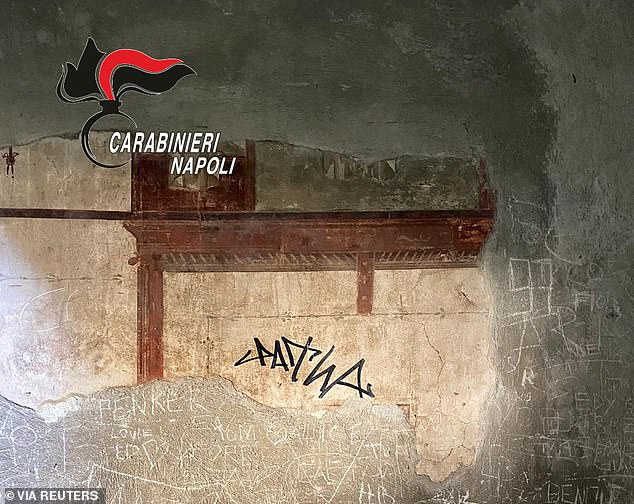- Tourist caught destroying ancient Roman house near Naples
- A 27-year-old man now faces charges for damaging artistic works
A Dutch tourist has been arrested for defacing Domus excavations that survived the eruption of Mount Vesuvius near Naples.
The unnamed 27-year-old man was detained after staff discovered graffiti on a frescoed wall at an ancient Roman villa in Herculaneum on Monday.
Italian police said in a statement that the graffiti, which was done with a black permanent marker, matches the man’s signature.
“Any damage damages our heritage, our beauty and our identity and that is why it must be punished with the greatest firmness,” said Italian Culture Minister Gennaro Sangiuliano.
According The independentThe anonymous tourist faces charges of damaging and defacing artistic works.
A sign made with a black marker on the wall of a domus in the Herculaneum Archaeological Park, in Ercolano, Naples, Italy
Herculaneum is a small town near Pompeii. After the eruption of Vesuvius in the year 79 AD. C., was buried under ashes, which helped its ruins remain well preserved.
It is not the first time that a historical site has been damaged in Italy. In 2023, two Germans were detained by police after they allegedly used black spray to write ‘DKS 1860’ on the 460-year-old columns of Florence’s iconic Vasari Corridor.
The corridor connects the city’s prized Uffizi Gallery and Pitti Palace and was originally built for the powerful Medici family.
The disrespectful act is understood to be a reference to 1860 Munich in Germany’s Third Division.
Also that year, two tourists carved their names into the wall of the 2,000-year-old Colosseum.


